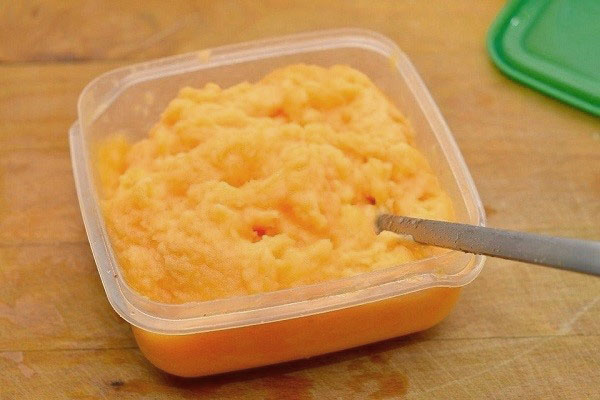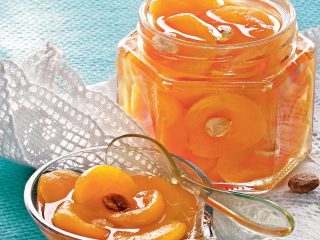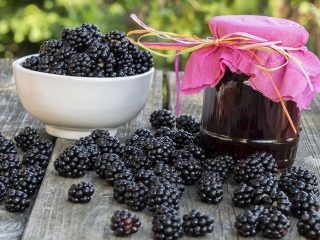Content
For the first months or even years after birth, the baby should be fed mother's milk. However, this does not always work out, and here baby food comes to the rescue, which includes products that are suitable in their properties for the age of the child. These are artificial mixtures, cow's milk, some types of cereals, vegetables and fruits. It is important to know at what age can a baby eat melon puree and how to prepare it correctly in order to stock up on a tasty delicacy for the winter.
Useful properties of melon puree
Melon is very useful for a growing child's body. It contains a lot of useful nutrients that help the child become healthy, cheerful and active. Among them are:
- ascorbic acid – strengthens the body’s immune forces, fights colds, viruses, pathogenic microorganisms;
- B vitamins – help to form a strong nervous system;
- folic acid – prevents the development of anemia, promotes the absorption of iron;
- vitamin A – strengthens vision, necessary for the full growth and development of the child;
- nicotinic acid (vitamin PP) – increases the efficiency of metabolic processes;
- phosphorus and calcium – necessary for the growth of bones and teeth;
- iodine – supports the functionality of the endocrine system;
- zinc – ensures healthy hair and nail plates;
- iron – participates in hematopoietic function, the formation of red cells;
- copper – ensures the transfer of oxygen to internal organs;
- cobalt – participates in the formation of the musculoskeletal system, cell renewal, and hematopoiesis.
Melon, like corn, contains gold in a form that is absorbed by the body. The element has a positive effect on the immune system and helps the body fight viruses and bacteria. The rich composition makes melon no less useful than watermelon, and in some respects it is significantly superior to it. The properties of the fruit are also valuable and varied:
- contains a high concentration of natural sugars, which are very quickly absorbed and saturate the body with energy;
- magnesium helps strengthen the nervous system of excitable and restless children prone to hysterics and whims;
- the high content of pectins helps free the body from accumulated waste and toxins coming from food, air, and water;
- potassium strengthens the heart and serves as a mild diuretic;
- melon seeds can be used as a child-safe dewormer;
- A decoction of the seeds will make your child's hair soft and silky.
Fiber, which is abundant in melon, has a positive effect on the functioning of the digestive tract, helps cleanse the intestines, and improve the child’s well-being. Its rich vitamin composition allows it to be used in therapeutic diets for certain diseases, for example, tuberculosis and rheumatism.
Features of preparing melon puree for the winter for babies
Pediatricians recommend introducing melon into the diet after a year. Previously, it was allowed to introduce fruit into baby food if the child has kidney problems. But abroad, melon can be found in the diet of babies from 6-8 months.
Sweet fruit should be introduced into children's diets gradually. You cannot immediately give melon in its pure form, and even in large quantities. Puree for infants should consist of several ingredients, the main one of which should be a vegetable or fruit that is already familiar and familiar to the baby.
For example, it is recommended to introduce applesauce as one of the first complementary foods. It is low-allergenic, easily digestible, and rich in nutrients. In addition, the taste goes perfectly with melon. Therefore, for the first time, it is recommended to make apple-melon puree, feed it to the child and observe for allergic reactions or increased gas formation.
Ingredients for melon puree for the winter
A caring and economical mother will take care of her baby’s nutrition in the summer, at the height of the season. To preserve vitamins for the whole year and present them to your baby in an interesting and tasty form, you can use ripe berries, fruits, and vegetables. When it comes to winter preparations for babies, it is better to use the freezing method rather than preservation.
Melon goes well not only with apples, but also with various berries, banana, peach, plum, avocado, mango and many others. Already from the age of 7 months, it is allowed to introduce raspberries, blueberries, black and red currants, and cherries into the diet.Raw apricots and peaches, like melons, should be used very carefully, so when making purees it is better to give preference to safer berries and fruits.
Banana-melon puree has a delicate creamy consistency, which kids love for its sweet taste and pleasant pulp. By combining melon with berries, you can enrich the puree with a large amount of vitamins. The selected ingredients must be placed in a blender and blended until smooth and free of lumps. Next you should taste it.
After preparing melon puree, you need to pour it into small disposable cups and freeze using the No Frost system. In winter, it is enough to take out one portion and defrost it in the refrigerator. The fruit mixture will exude a real, genuine aroma of freshness, give the child real pleasure, and saturate it with nutrients important for the developing body.
A simple recipe for melon puree for the winter
Before you start preparing the puree, you need to wash the melon well. This fruit grows on the ground and has bacteria on its skin. When cutting, some of them fall on the knife, and then on the pulp of the fruit. Therefore, you need to wash the melon under running water and soap, dry it with a towel, and then divide it into parts. You should get rid of not only the peel, but also the greenish layer separating it from the orange pulp.
Next, cut the melon first into slices and then into pieces. Place in a blender bowl, add a little boiled water or apple juice, and blend. Pour the resulting mass into small containers designed for freezing liquid products (containers, cups).One serving should have a volume that the baby can eat right away, so as not to store defrosted melon puree for a long time - it will be fresh for only a few hours.
Terms and conditions of storage
Unlike a watermelon, it is difficult to select a melon by knocking; you need to look at its tail. It should be dry and thick. And at the opposite end - the crust is soft and sagging; the softer it is, the sweeter the melon. Also, there should be no spots on the skin of the fruit, this indicates that the melon is ripe and not overripe.
If after purchase it turns out that the fruit is unripe, it cannot be used as food for babies yet. The melon should be placed somewhere on a shelf or hung in a room with relatively high humidity and a temperature of at least 0 degrees. Ripe fruit, even if it has not been cut, must be stored in the refrigerator. In warm weather, a ripe melon begins to ripen very quickly and in a short time (3-4 days) can become overripe, begin to rot, and deteriorate.
The cut melon must be kept in the refrigerator in a special container. If you leave it at room temperature, it will spoil within a day. In proper conditions it can last up to 7 days. It is best to cut the melon into pieces and freeze it, this way it will last the longest, until the new season.
In winter, all you have to do is carefully remove it from the freezer compartment and let it slowly thaw in the refrigerator. Then mash with a fork or grind with a blender, and the puree is ready. It can be added to porridges, mixed with other fruit or berries, or made into melon soup.
Conclusion
Melon puree will diversify a baby's diet, add a bright summer note, a delicate, pleasant taste, and give energy and health.It won’t be difficult for mothers to prepare such a dish for the winter. All that remains is to successfully choose the ratio of fruit and berry composition and freeze the melon puree correctly.












